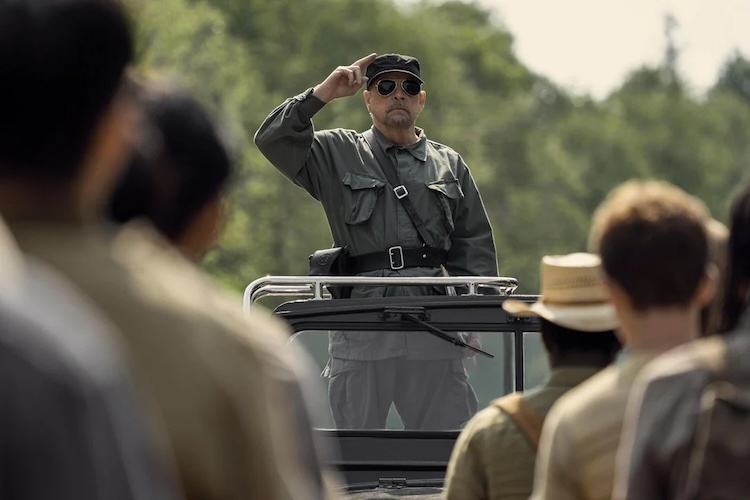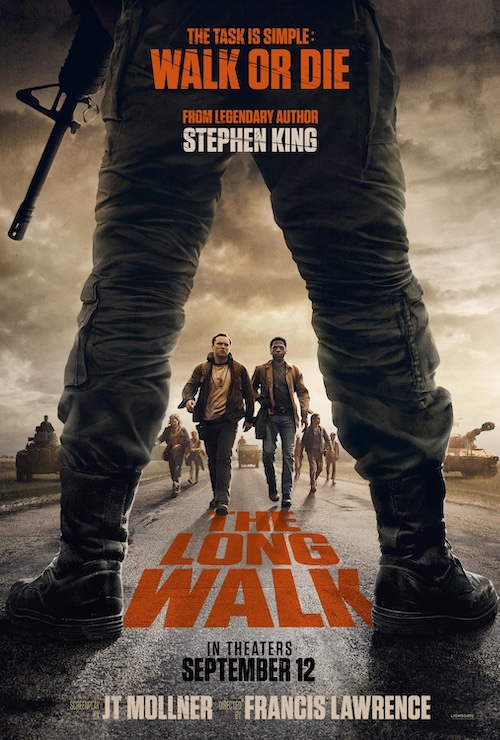
Movie Review: The Long Walk
In the new film from director Francis Lawrence, The Long Walk, a nightmarish dystopian world is depicted wherein a group of teenage boys volunteer to compete in an activity known as, well, the Long Walk. This journey, which consists of nearly four hundred miles of traversing both town and country roads, is overseen by soldiers who are allowed to shoot the boys dead should they fail to maintain a certain walking speed without stopping.
Based on a 1979 novel that Stephen King wrote using the pseudonym Richard Bachman, The Long Walk is, on many levels, easily reminiscent of the “Hunger Games” series penned by Suzanne Collins. King’s book, however, predates the perhaps more well known saga of Katniss Everdeen that spanned three volumes by Collins. Interestingly enough, the second and third chapters of the Hunger Games – Catching Fire (2013) and Mockingjay – Part 1 (2014) and Part 2 (2015) – were both directed by Frances Lawrence, who also helms The Long Walk. Ultimately, it proves to be a not too great coincidence as the two tales end up following a similar overall trajectory.
The script, penned by JT Mollner – who previously wrote and directed the films Strange Darling (2023) and Outlaws and Angels (2016) – adheres faithfully to the source material. The tone of the film however, echoes another coming-of-age story – Rob Reiner’s adaptation of King’s Stand By Me (1986) – albeit with far more wanton violence. Essentially, the film follows the core group of boys as they walk and talk about their lives and what they plan to do once the walk is over and they claim their “prize.” The parallels between those two films echo throughout, but The Long Walk falls far short of the characterization and dramatic heft that Stand By Me achieved.
As the ostensible hero of the tale, Cooper Hoffman’s portrayal of Raymond Garraty serves as an adequate adolescent who may have ulterior motives for volunteering for the walk than simply winning the prize. His walking partner, Peter McVries (David Jonsson) however, is afforded a bit more depth of character and is allowed some growth that Raymond is not. Other characters taking part in the walk serve as the typical characters one might find in an ensemble of this sort. There’s the ultra-militaristic boy, the far-too-sullen boy, the one who talks too much, and so on and so on.

Mark Hamill in “The Long Walk.” Photo by Murray Close/Lionsgate – © 2025 Lionsgate
Once the boys begin dropping out of the walk, the film utilizes flashbacks to fill in the narrative and move the story forward along with the ongoing conversations the boys have. Throughout their journey, the boys are urged along by a character called the Major (Mark Hamill) who proves to be the villain of the story, in more ways than one. Hamill embraces the role and revels in chewing the scenery in every scene he is in and tends to run away with the film when doing so.
Although it may not be the cultural tempest that the aforementioned “Hunger Games” series became, the adaptation of Stephen King’s The Long Walk does successfully echo that franchise in many ways, even if it predates it and fails to reclaim the mantle of finest dystopian teenage nightmare.
Mike Tyrkus
Latest posts by Mike Tyrkus (see all)
- Box-Office Weekend: Black Phone Hangs Up Tron - October 24, 2025
- Box-Office Weekend: Taylor Swift is Queen - October 5, 2025
- Box-Office Weekend: One Battle After Another - September 28, 2025



